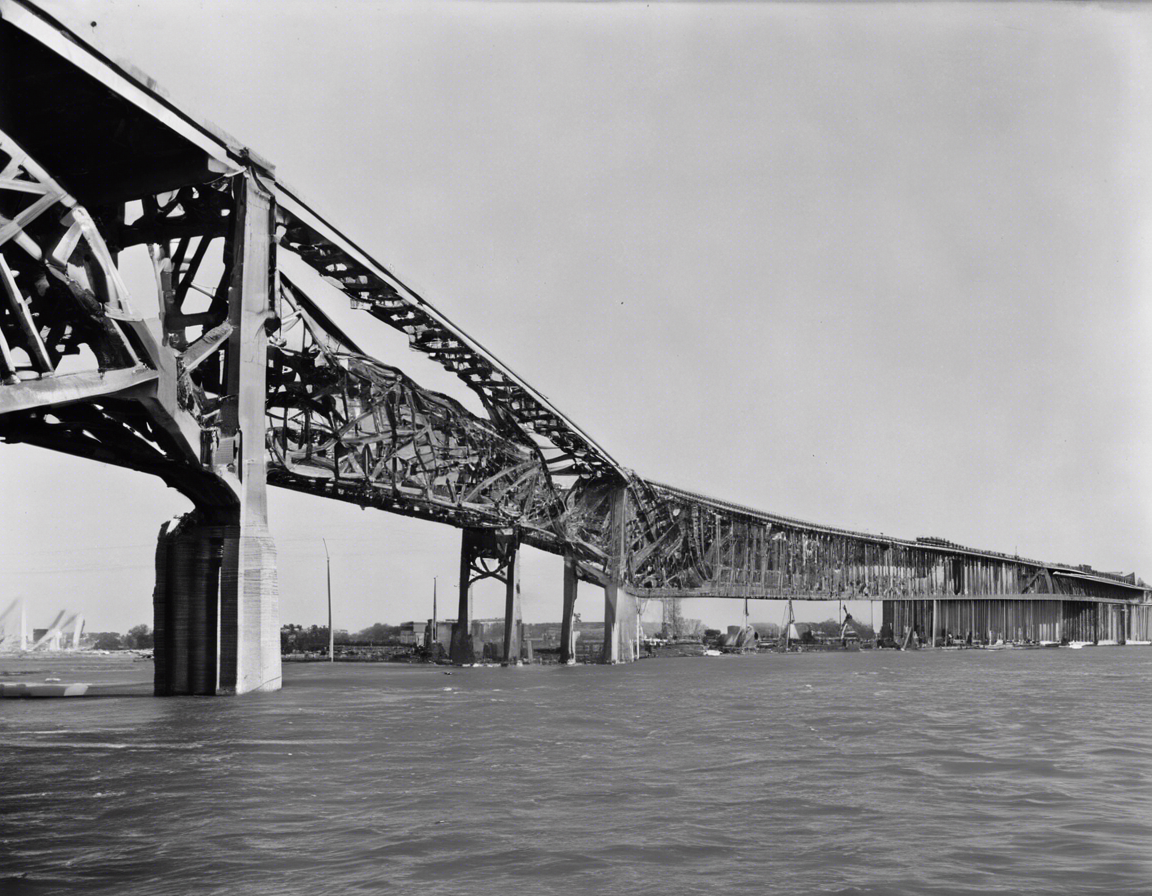On the fateful morning of January 18, 1987, tragedy struck the Francis Scott Key Bridge in Baltimore, Maryland. The bridge, a vital transportation artery connecting Baltimore to the northern suburbs, experienced a catastrophic failure that led to the deaths of four individuals. The Francis Scott Key Bridge disaster stands as a stark reminder of the importance of thorough engineering practices, regular maintenance, and inspection of critical infrastructure. In this article, we delve into the events leading up to the disaster, explore the key factors that contributed to the bridge’s failure, and discuss the implications for bridge safety and maintenance.
The Francis Scott Key Bridge: An Overview
The Francis Scott Key Bridge, named after the composer of the Star-Spangled Banner, spans the Patapsco River in Baltimore, Maryland. Opened in March 1977, the bridge served as a crucial link for commuters and freight transport between Baltimore and its surrounding areas. With a total length of 4,365 feet and four lanes of traffic, the bridge was a prominent feature of Baltimore’s urban landscape.
The Disaster Unfolds
On that cold January morning, motorists and pedestrians were shocked as a section of the bridge’s concrete deck abruptly collapsed, plunging several vehicles into the icy waters below. The cause of the collapse was later determined to be a structural failure in one of the bridge’s expansion joints, which had become corroded and weakened over time. The sudden failure of the joint compromised the integrity of the deck, leading to the tragic incident that claimed multiple lives and caused widespread disruption.
Factors Contributing to the Disaster
Several key factors played a role in the Francis Scott Key Bridge disaster:
1. Neglected Maintenance
Over time, the expansion joints on the bridge had deteriorated due to a lack of regular maintenance and inspection. Corrosion, wear and tear, and exposure to the elements all contributed to the weakening of critical components, ultimately leading to the catastrophic failure.
2. Design Flaws
The design of the bridge’s expansion joints, which are crucial for accommodating thermal expansion and contraction, was insufficient to withstand the stresses placed on them over years of heavy use. Inadequate design considerations and material selection exacerbated the vulnerability of these critical structural elements.
3. Deferred Repairs
Despite early signs of deterioration and distress observed in the bridge’s expansion joints, repairs and reinforcement measures were deferred due to budget constraints and competing priorities. This delay in addressing known deficiencies allowed the bridge’s condition to worsen until a catastrophic failure became inevitable.
Lessons Learned and Implications
The Francis Scott Key Bridge disaster served as a wake-up call for bridge engineers, transportation authorities, and policymakers across the country. The tragic event underscored the critical importance of proactive maintenance, regular inspections, and proper design considerations in ensuring the safety and longevity of vital infrastructure.
1. Bridge Safety Protocols
In the aftermath of the disaster, rigorous safety protocols and inspection standards were implemented for bridges nationwide. Regular monitoring of structural health, prompt repair of deficiencies, and comprehensive risk assessments are now standard practices to prevent similar incidents.
2. Public Awareness and Engagement
The Francis Scott Key Bridge disaster sparked greater public awareness of the importance of infrastructure maintenance and investment. Communities and policymakers alike recognized the need for sustained funding and resources to address the nation’s aging bridges and prevent avoidable tragedies.
3. Technological Innovations
Advancements in bridge engineering, materials science, and monitoring technologies have enabled more effective diagnosis of structural issues, timely interventions, and innovative design solutions. From smart sensors to predictive analytics, these innovations play a crucial role in maintaining the safety and resilience of bridges in the modern era.
FAQs: Understanding the Francis Scott Key Bridge Disaster
1. What caused the Francis Scott Key Bridge disaster?
The collapse of the Francis Scott Key Bridge was primarily attributed to a structural failure in one of the bridge’s expansion joints, which had deteriorated over time due to corrosion and neglect.
2. How many lives were lost in the Francis Scott Key Bridge disaster?
Four individuals lost their lives in the Francis Scott Key Bridge collapse on January 18, 1987.
3. What lessons were learned from the Francis Scott Key Bridge disaster?
The disaster highlighted the importance of proactive maintenance, regular inspections, and proper design considerations in ensuring the safety and longevity of critical infrastructure.
4. How did the Francis Scott Key Bridge disaster impact bridge safety protocols nationwide?
The disaster led to the implementation of rigorous safety protocols, enhanced inspection standards, and improved maintenance practices for bridges across the country.
5. What role did public awareness play in the aftermath of the Francis Scott Key Bridge disaster?
The disaster increased public awareness of the importance of infrastructure maintenance and investment, prompting communities and policymakers to prioritize bridge safety and maintenance.
In conclusion, the Francis Scott Key Bridge disaster serves as a poignant reminder of the critical need for vigilance, investment, and innovation in preserving the safety and integrity of our nation’s bridges. By learning from past tragedies, implementing best practices, and embracing technological advances, we can safeguard our infrastructure for the benefit of current and future generations.
